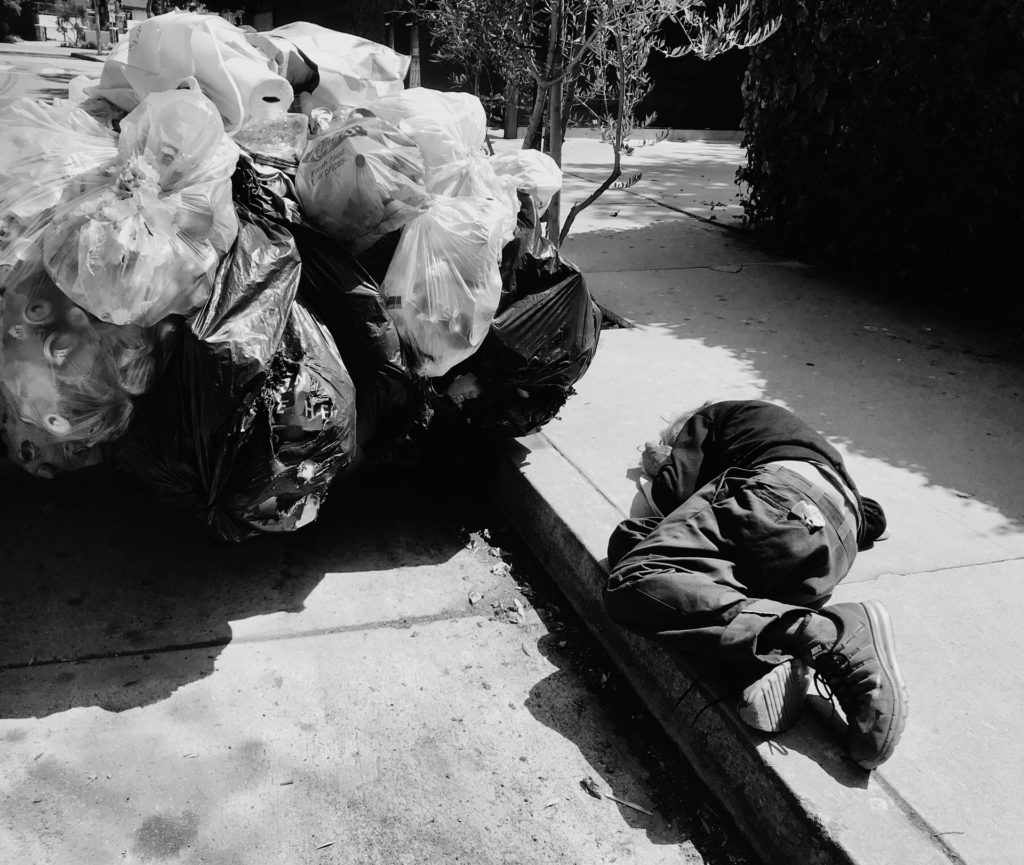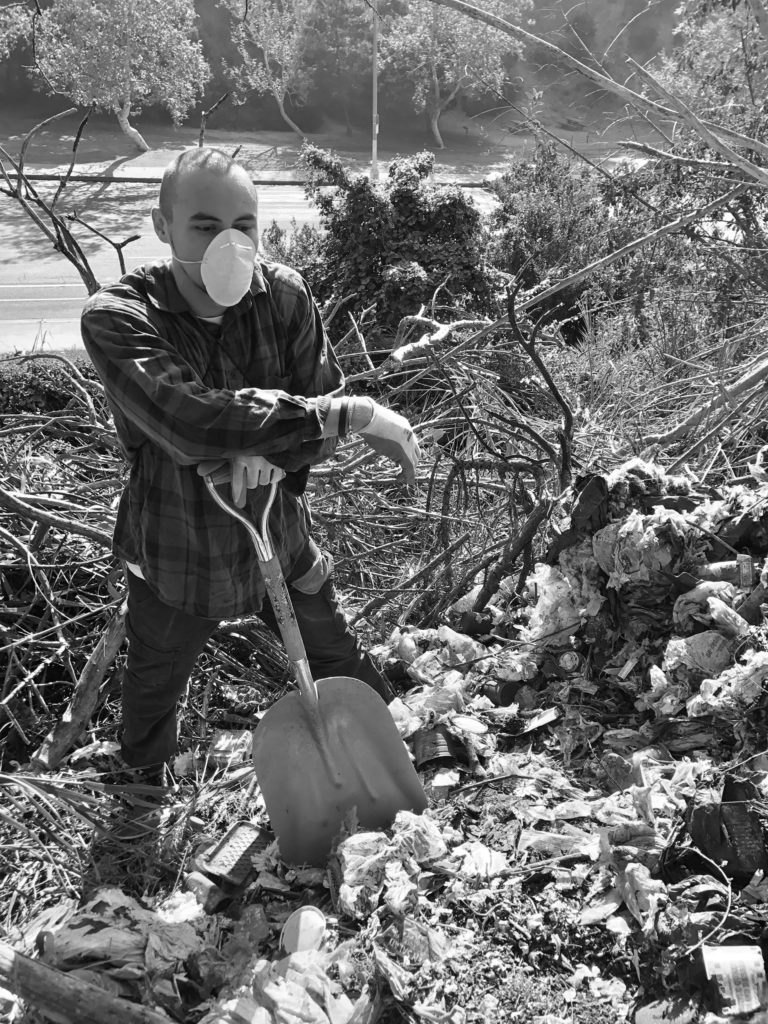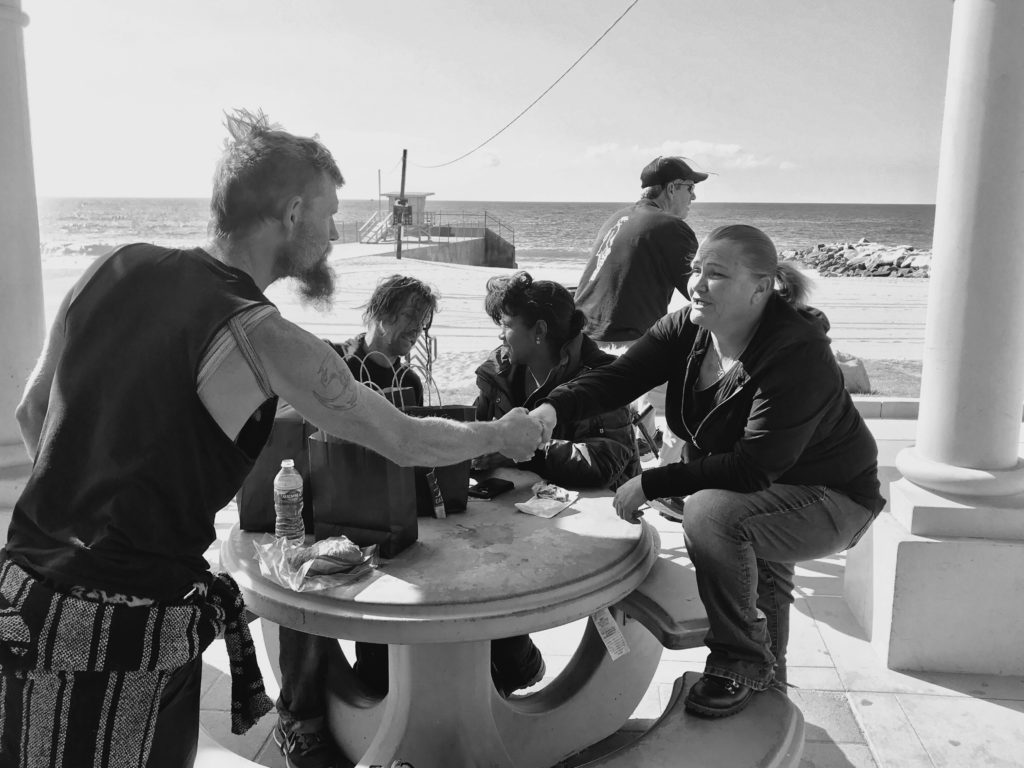Uniting Home and Health
COMMUNITY IMPACT FUND GRANTEES ADDRESS THE LINK BETWEEN SICKNESS AND HOMELESSNESS.

WRITTEN BY VICTORIA CLAYTON
On a Saturday afternoon late last fall, paramedics transported a 21-year-old woman from Venice Beach to Providence Saint John’s Health Center. The woman, seven months pregnant, reported trouble breathing. And she had another issue—she’d been living on the streets for several months. Within a couple of hours, emergency doctors addressed the mother’s and child’s immediate medical concerns. The medical assessment showed both were stable. Yet health care providers have become acutely aware that without reliable shelter, a person’s health status isn’t truly stable. Any health condition—asthma, diabetes, addiction, heart disease, mental health issues or even a minor cut or injury—can easily become a health crisis if you don’t have a place to live, says Ron Sorensen, former director of community health partnerships at Providence Health & Services. That’s why Saint John’s Health Center Foundation has awarded several of its Community Impact Fund grants to local organizations that serve people without a home. The need is tremendous. Each night in Santa Monica alone there are more than 950 people who don’t have a home. In Greater Los Angeles, that number is close to 55,000. “The problem is real, and it’s signifiant. Clearly this is why it’s not unusual for our emergency department to see up to 150 patients each month who are homeless,” says Sorensen. Some of the patients truly have emergency-level issues, but many could have avoided the ER if they had housing and access to basic health services, food or a bed, he says. “We even see some people who really only need a prescription refilled or something as simple as that.” Saint John’s believes it’s unconscionable to address any immediate medical situation without taking a crack at the bigger issue. Mallnese Tarpley, community care coordinator for the homeless care navigation program, is part of the Saint John’s team working on addressing homelessness and its related challenges. Her position is a linchpin of sorts. Stationed in the emergency department, she’s the one called on to address a patient’s housing and social service issues after discharge. Plans are underway to hire a second coordinator position to work the night shift at Saint John’s using a CIF grant. “I make that direct connection with them. I’m the one to say, ‘Can you please allow me to help you?’ by providing resources and referrals related to an individual experiencing homelessness,” says Tarpley. Not a quick or easy job. Patients often have complex problems and at least half won’t accept help. For her, success hinges on attentive listening.

“When they see that I’m really listening to their story, listening to their concerns and struggles, that’s when their hearts begin to speak,” she says. “It might take hours, but that’s when they become open to getting help.” And that’s also when the heavy lifting begins. Tarpley, who has an extensive background in community services for Angelenos who are homeless, is extremely familiar with the Los Angeles County Homeless Coordinated Entry System—the first step for a homeless person to be screened for resources. She makes sure that a patient is referred to be screened and entered into the CES system or re-entered if they’ve fallen out. She then figures out an appropriate next step based on the patient’s needs. Sometimes that means she can obtain an emergency housing voucher, shelter placement referral or a spot in an appropriate drug or alcohol treatment program, along with a connection to an agency that will coordinate care and other long-term housing solutions. Or, as was the case with the pregnant young woman, sometimes that means connecting the patient with family members able to assist. “The young lady had some mental health issues along with her health problem, yet her family was out there actively looking for her,” Tarpley says. “Ultimately she told me, ‘I just want to go home.’ She was able to provide me with names and phone numbers of relatives so I could make that connection for her.” Tarpley was even able to offer the woman free transportation to return back home, thanks to CIF grant money. Of course, it’s only the luckiest patients who have their challenges met by a phone call and a ride. That’s why Tarpley works in tandem with community agencies such as The People Concern, another CIF grant recipient, that provides everything from short-term respite beds to permanent supportive housing and more. “The People Concern’s longstanding relationship with Saint John’s is nothing short of a blessed collaboration,” says John Maceri, chief executive officer of the agency. The agency was responsible for helping Saint John’s develop the community care navigator program at the hospital. “Together we’ve figured out how to deliver a better quality of care and quality of life for the patients who get discharged from the emergency department,” he says. In fact, the program developed between Saint John’s emergency department and The People Concern has become the prototype of compassionate care and treatment of people who are homeless for all the hospitals on the Westside. The Community Impact Fund hasn’t stopped with merely supporting emergency department personnel and agencies that take care of discharged patients. The point is to shrink the homeless crisis and the myriad health threats associated with it. To this end, in 2016 CIF was one of the first significant donors to The Pacific Palisades Task Force on Homelessness, a grassroots organization dedicated to solving the homeless crisis in their community. Charles Smith, a CIF trustee, was one of the earliest champions of the once fledgling organization.
“What I saw was a small group of very professional and determined folks who weren’t just looking for easy answers,” Smith says. “They didn’t just want to call the police on people who were homeless in their neighborhoods. They wanted to figure out how to help and how to house these people.”

Securing the initial grant money from CIF allowed the Pacific Palisades Task Force to implement an effective three-pronged approach, explains Sharon Browning, vice president of the task force. “Our project model is that we raise funds to pay for a full-time professional outreach team from The People Concern.” The second prong of the program includes a rotating group of volunteers that goes out daily, diligently looking for people who could benefit from professional outreach. The third prong involves a lot of community education. “Education is definitely something we’re really proud of,” says Barbara Overland, co-chair of fundraising for the task force. “Through a series of discussions and events, we’ve created more understanding and compassion for the problem in our community.” The nascent task force’s results aren’t too shabby either. Their organization has grown considerably, and they’ve obtained health care and immediate housing for the vast majority of the people with whom they’ve engaged, directly securing permanent homes for many of them. “We constantly hear from our community that the improvement is tremendous,” says Doug McCormick, president of the task force. “What was a very frightening situation to some people just a few years ago isn’t any longer. Our community now takes great pride that we engage people who are homeless, as opposed to turning our back on them or being angry.” Furthermore, the Pacific Palisades Task Force has created a program model worth replicating. Malibu has already started a program using the task force’s blueprint. Task force members have also been asked to help Brentwood adopt such a program, while Hollywood, Studio City and Manhattan Beach have also expressed interest. “The ripple effect is astounding. It’s humbling to think how many people might actually get helped with what was started by a tiny group of dedicated people. But it all hinged on that initial CIF grant,” says McCormick. “When others saw that Saint John’s believed in us, it was a game changer.” Tarpley is currently training a community care coordinator from Cedars-Sinai Medical Center. The community care coordinator program at Saint John’s “would not be possible were it not for the funds received from the foundation,” Tarpley says. “Many lives have been positively impacted because of the generosity and compassion of those who give and the support of the foundation. This also includes Saint John’s caregivers who work effortlessly around the hospital to assist and help our patients who are experiencing homelessness.”
Will homelessness—and the accompanying health issues—ever be a problem solved? The People Concern’s Maceri says he’s optimistic homelessness will at least be considerably decreased in the next few years. “The good news is that these are problems that respond well to smart, strategic investment and collaboration. I’m heartened that so many good people are coming together and figuring this out.”
